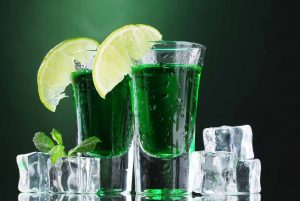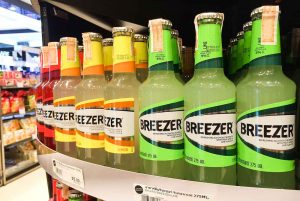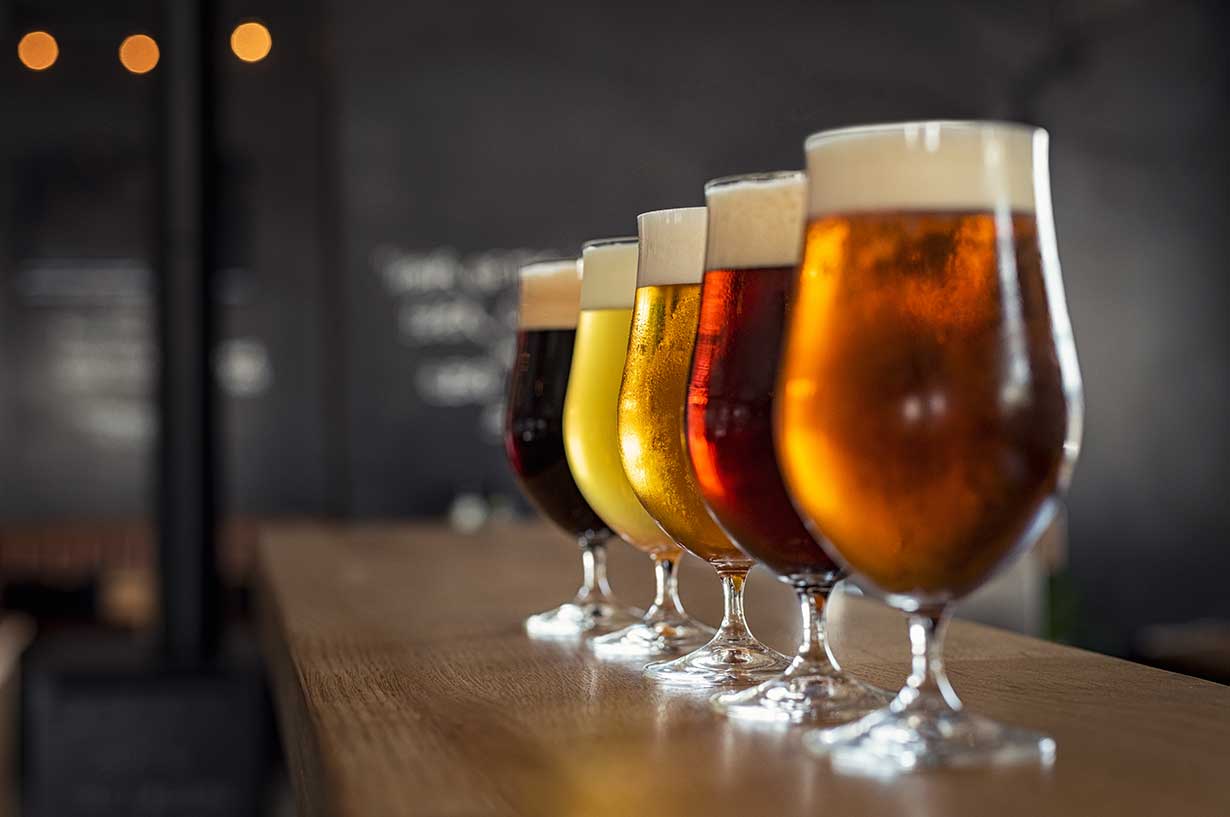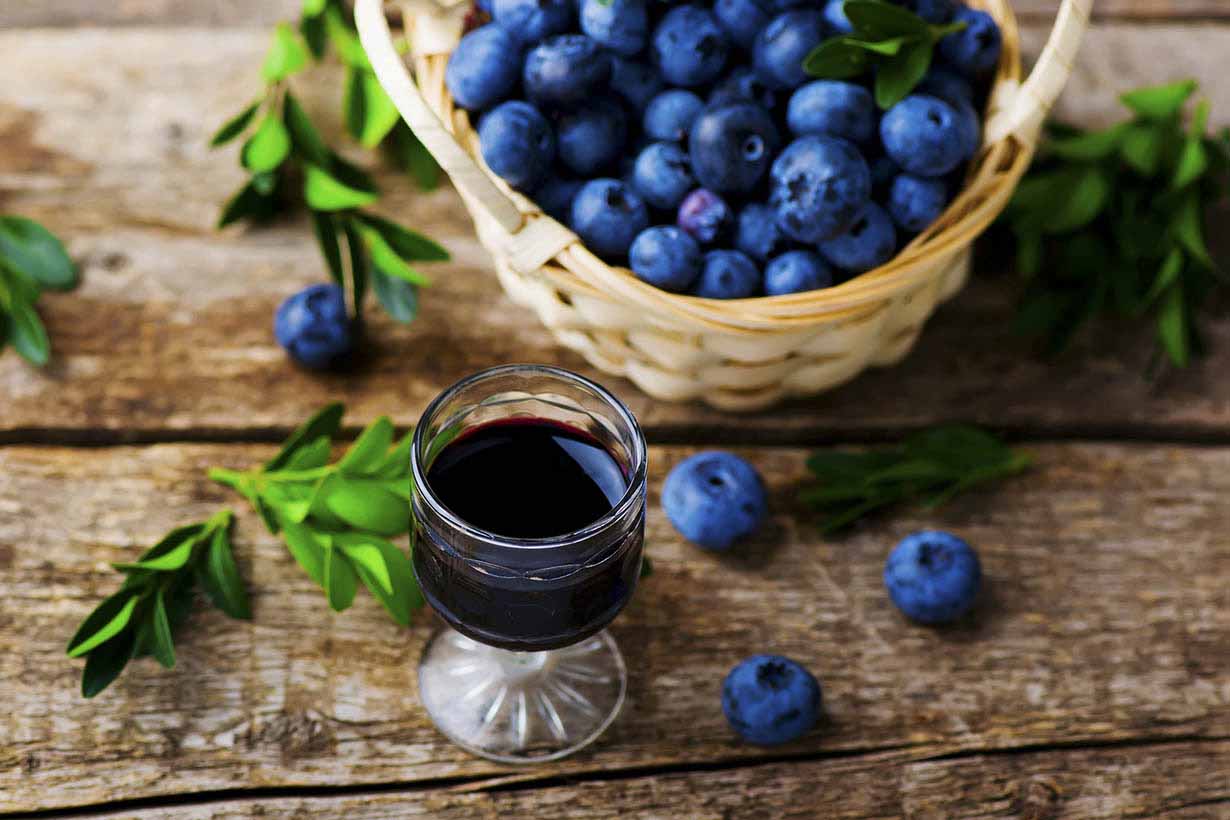While people may assume alcohol can’t fit into a low-carb diet, some alcohol options are actually very low in carbohydrates.
This article provides an A to Z guide to alcohol options that best fit into a low-carb or ketogenic diet.
From alcohol with no carbohydrates to drinks loaded with sugar, this comprehensive guide details the typical carbohydrate content of common alcoholic drinks.
Table of contents
Alcohol Use Has Clear Drawbacks
First, it is important to be aware of the potentially harmful drawbacks of drinking alcohol.
While some studies have found that alcohol may have certain benefits—such as increasing levels of “good” HDL cholesterol—recent consensus deems that no level of alcohol consumption is completely safe (1).
This is because alcohol use can be addictive, and alcohol use can raise the risk of several types of cancer, liver conditions, and other health complications (2, 3, 4).
You can learn more about alcohol’s effects and its potential impact on longevity here.
At-a-Glance Comparison Table
The following table shows the drinks included in this guide alongside their typical carbohydrate content per serving.
For more information on each drink and complete references, see the section on the specific drink.
| Drink name | Typical carbohydrate content per serving |
|---|---|
| Absinthe | 0 g per 1 fl oz (28g) |
| Brandy | 0 g per 1 fl oz (28g) |
| Gin | 0 g per 1 fl oz (28g) |
| Rum | 0 g per 1 fl oz (28g) |
| Tequila | 0 g per 1 fl oz (28g) |
| Vodka | 0 g per 1 fl oz (28g) |
| Whiskey | 0.03 g per 1 fl oz (28g) |
| Soju | 1.24 g per 100 ml |
| Jagermeister | 2.8 g per 20 ml shot |
| White wine | 3.82 g per 5 fl oz (147g) |
| Red wine | 3.84 g per 5 fl oz (147g) |
| Champagne | 4.16 g per 180g glass |
| Rosé wine | 5.75 g per 5 fl oz (152g) |
| Sake | 7.3 g per 5 fl oz (146g) |
| Beer (regular) | 10.6 g per 12 fl oz (357g) |
| Sangria | 16.5 g per 228g glass |
| Mead | 18.0 g per 5 fl oz (148g) |
| Hard cider | 21.3 g per 12 fl oz (360g) |
| Pre-mixed drinks | 36.3 g per 12 fl oz (360g) |
Distilled Spirits
Absinthe

Absinthe is a distilled alcoholic drink made from a variety of herbs and spices.
As one of the strongest alcoholic drinks available, the alcohol volume of Absinthe is typically between 45-74% ABV.
While specific absinthe data is unavailable in the USDA database, it should have similar nutritional values to a distilled, 100 proof spirit.
Carbohydrate Content of Absinthe
Here are the nutritional details per 27.8-gram fluid ounce (5):
- Calories: 82 kcal
- Carbohydrates: 0 g
Absinthe is a zero-carbohydrate alcohol.
Brandy

Brandy is a spirit usually made from grapes. Brandy is traditionally consumed as an after-dinner drink.
Although brandy has a typical alcohol content of 35–40%, it can be as high as 60% ABV.
Carbohydrate Content of Brandy
Like other distilled spirits, brandy is not a significant source of carbohydrates.
A typical 1 fluid ounce (28g) serving of brandy provides (6):
- Calories: 65 kcal
- Carbohydrates: 0 g
Brandy is a zero-carbohydrate alcohol.
Gin

Gin is a distilled spirit thought to originate from England in the middle ages.
Its typical production process includes ingredients like fermented grain and juniper berries.
Gin typically has an alcohol content of 35–50% ABV.
Carbohydrate Content of Gin
As with other distilled spirits, gin is not a source of carbohydrates. Per typical fluid ounce (28g) serving, gin provides (7):
- Calories: 65 kcal
- Carbohydrates: 0 g
Gin is a zero-carbohydrate drink.
Rum

The production of rum involves fermenting and distilling a combination of water and sugar—typically molasses or sugar cane—with yeast.
Rum has a typical alcohol content of 35–50% ABV.
Carbohydrate Content of Rum
According to USDA data, rum provides the following values per 27.8g fluid-ounce (8):
- Calories: 64 kcal
- Carbohydrates: 0 g
Rum is a zero-carbohydrate alcoholic drink.
Tequila

Tequila is a famous Mexican spirit that, perhaps unsurprisingly, originates in the city of Tequila.
The alcohol content of tequila ranges from 35% to 55% ABV.
Carbohydrate Content of Tequila
Since it is a distilled spirit, tequila is not a source of carbohydrates. A fluid ounce (28g) of tequila has the following values (9):
- Calories: 65 kcal
- Carbohydrates: 0 g
Tequila is a zero-carbohydrate drink.
Vodka

Originating from Russia, vodka is a distilled spirit typically made from grains or potatoes.
It has a typical alcohol content of 40% ABV.
Carbohydrate Content of Vodka
Once again, as a distilled spirit, vodka is not a source of carbohydrates.
Per fluid ounce (27.8g), vodka typically has the following values (10):
- Calories: 64 kcal
- Carbohydrates: 0 g
Vodka is a zero-carbohydrate alcohol option.
Whiskey

Whiskey is produced by fermenting various grains and then aging them in wooden casks.
With a typical alcohol content of 40%, whiskey is another strong, distilled spirit.
Carbohydrate Content of Whiskey
Using USDA data for a 43% ABV whiskey, each 27.8g fluid ounce has the following nutritional values (11):
- Calories: 70 kcal
- Carbohydrates: 0.03 g
Whiskey is an insignificant source of carbohydrates.
Fermented Grain & Starch Drinks
Beer

Beer is among the most popular drinks in the world. Its production involves the fermentation of grains like barley and wheat.
In general, the alcohol content of most commercial beer is approximately between 3–12% ABV.
Carbohydrate Content of Beer
The carbohydrate content of beer varies, and it depends on the type of beer, ingredients, and brewing process.
Based on USDA data, a regular 12 fluid ounce (357g) bottle of Budweiser beer contains (12):
- Calories: 146 kcal
- Carbohydrates: 10.6 g
That said, there are also some low carb beers available, and many of these tend to be ‘light’ beers.
Beer is a moderately high-carbohydrate alcohol.
For more information on beer, see this guide to its nutritional properties.
Hard Cider

Hard cider is a fermented alcoholic drink made primarily from the juice of crushed fruit (typically apples).
Hard cider has a typical alcohol content of 4–8% ABV.
Carbohydrate Content of Hard Cider
The carbohydrate content of hard cider can significantly vary depending on whether it contains added sugars.
While traditional dry cider is a little lower in carbohydrates, many sweetened and flavored hard ciders contain substantial amounts of added sugar.
It is always best to check ingredient and nutrition labels for a specific, but traditional, dry hard cider will typically contain the fewest carbohydrates.
According to USDA data, a typical 12 fluid ounce (360g) bottle of hard cider provides (13):
- Calories: 202 kcal
- Carbohydrates: 21.3 g
Hard cider is a high-carbohydrate alcoholic drink.
Sake

Sake is the national drink of Japan, made by a process of fermenting rice.
While there are many sake varieties, it typically has an alcohol content of 15–20% ABV.
Carbohydrate Content of Sake
The USDA provides nutritional data for 1 fluid ounce (29.1g) of sake. Based on this data, a 5 fluid ounce (146g) glass of sake would provide (14):
- Calories: 195 kcal
- Carbohydrate: 7.3 g
Sake is a moderately low-carbohydrate drink.
Soju

Dubbed “the national drink of Korea,” soju is a distilled alcoholic drink typically made from rice or starches such as sweet potatoes.
The alcohol content typically ranges from 12–20% ABV, but milder and stronger options are also available.
Carbohydrate Content of Soju
The carbohydrate content of soju can vary depending on the specific product, with sweetened fruit-flavored soju drinks containing higher levels.
However, here are the values per 100 ml for one of the most popular varieties—Jinro Chamisul Fresh (15):
- Calories: 99 kcal
- Carbohydrates: 1.24 g
Unsweetened soju varieties are generally low-carb choices.
Liqueurs and Mixed Drinks
Pre-Mixed Drinks

Pre-mixed drinks—also known as alcopops and coolers—are typically sweet, mild-tasting, and low in alcohol.
In terms of their composition, these drinks consist of water, added sugar, artificial flavorings, and a source of alcohol—typically vodka or rum. They have a typical alcohol content of 3–5% ABV.
Carbohydrate Content of Pre-mixed Drinks
Pre-mixed drinks are typically high-carbohydrate drinks due to their large added sugar content.
Here are the typical nutritional details for a 12 fluid ounce (360g) pre-mixed drink (16):
- Calories: 245 kcal
- Carbohydrates: 36.3 g
Pre-mixed drinks are typically high in carbohydrates.
Jagermeister

Originating in 1930s Germany, the production of Jagermeister involves steeping 56 different herbs, roots, and spices in alcohol.
Jagermeister has an alcohol content of 35% ABV.
Carbohydrate Content of Jagermeister
According to the official Jagermeister website, a 20 ml shot of Jagermeister contains (17):
- Calories: 50 kcal
- Carbohydrates: 2.8 g
Per serving, Jagermeister is a low-carbohydrate alcoholic drink.
Mead

Mead is a traditional alcoholic drink made from honey, water and yeast. It is otherwise known as “honey wine” and may contain various herbs, spices, and flavorings.
Mead has a typical alcohol content of 8–14% ABV.
Carbohydrate Content of Mead
Just like the honey it comes from, mead has a sweet taste and it is quite high in carbohydrates.
A typical 5 fl oz (148 ml) serving of Chaucer’s sweet honey mead provides the following values (18):
- Calories: 150 kcal
- Carbohydrates: 18.0 g
Mead is a high-carbohydrate alcohol.
Wine-Based Drinks
Champagne

While many people associate Champagne with celebrations such as engagements and weddings, it is actually not a unique drink. In short, Champagne is defined as sparkling wine produced within the French region of Champagne
Champagne has a typical alcohol content ranging from approximately 11 to 13% ABV.
Carbohydrate Content of Champagne
A medium to large (180g) glass of Champagne provides (19):
- Calories: 135 kcal
- Carbohydrates: 4.16 g
Champagne is a low-carbohydrate alcohol.
Red Wine

Red wine is an alcoholic drink made by fermenting whole red and black grapes still in their skins.
It typically contains around 10–15% ABV.
We’ll look at how white wine compares to red wine later in this guide. There are also less-common berry wines, such as blueberry wine, available.
To learn about the lowest-carbohydrate wine options, see here.
Carbohydrate Content of Red Wine
Since most of the sugar in grapes is fermented during the process, red wine tends have a low sugar content.
According to USDA data, a typical 5 fluid ounce (147g) serving of red wine contains (20):
- Calories: 125 kcal
- Carbohydrates: 3.84 g
Red wine is a low-carb-friendly alcoholic drink.
Rosé Wine

While many people believe that rosé wine is a blend of red and white wine, it’s more common for producers to use the maceration method.
In short, the drink is made by fermenting pure grape juice in the same way as white wine. However, the grape skins have contact with the fermenting liquid for a short period.
Rosé wine has a typical alcohol content of 9–14% ABV.
Carbohydrate Content of Rosé Wine
As with any wine, the carbohydrate content will differ slightly depending on the grapes used and fermentation time.
The USDA provides nutritional data for rose wine per fluid ounce (30.3g). Based on this data, a 5 fluid ounce (152g) serving of rosé wine would provide (21):
- Calories: 126 kcal
- Carbohydrates: 5.75g
Rosé wine is a low-carbohydrate alcoholic drink.
Sangria

Sangria is a kind of Spanish cocktail that combines red wine, orange juice, various fruits, and sugar. It is often served in a large jug or bowl.
Sangria typically has an alcohol content of approximately 7–14% ABV.
Carbohydrate Content of Sangria
The exact nutritional composition of sangria will depend on the precise ingredients used.
However, according to USDA data, sangria typically has the following values per 228g glass serving (22):
- Calories: 189 kcal
- Carbohydrate: 16.5g
Sangria typically has a high-carbohydrate content.
White Wine

White wine tends to be slightly lower in alcohol content than red wine, with a typical ABV of 11–14%.
Carbohydrate Content of White Wine
Similar to red wine, white wine is also very low in carbohydrates.
A 5 fluid ounce (147g) glass of white wine has (23):
- Calories: 121 kcal
- Carbohydrates: 3.82 g
White wine is a low-carb option.
What is the Best Alcohol Option for Low Carb Diets?
As earlier stated, it is generally better to limit or refrain from alcohol use.
However, specifically for low-carbohydrate diets, the best alcohol options are distilled spirits (like rum, vodka, whiskey) and dry wine, which contain the lowest absolute carbohydrate content.
Pre-mixed drinks high in sugar, beer, hard cider, and mead are generally higher in carbohydrates and not the best fit for a low-carb diet.
Finally, individuals who drink alcohol should consume it sensibly, particulary in the context of a low intake of carbohydrates.





